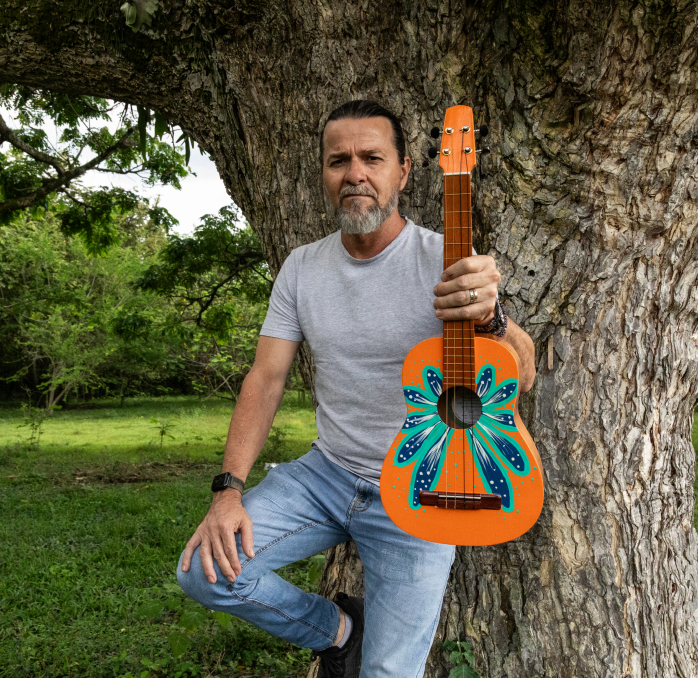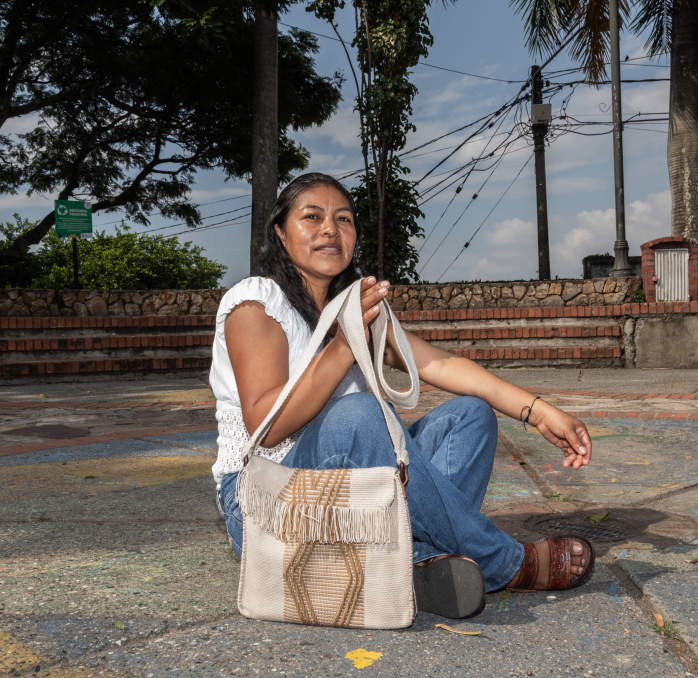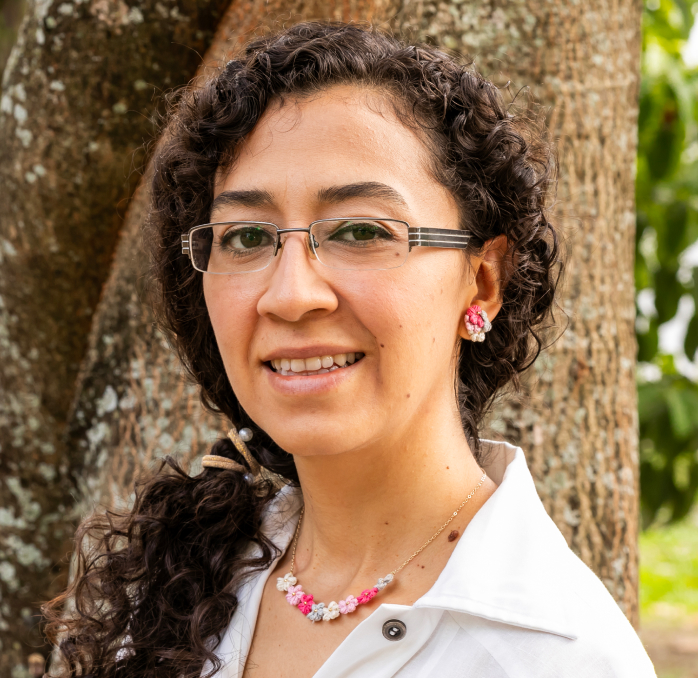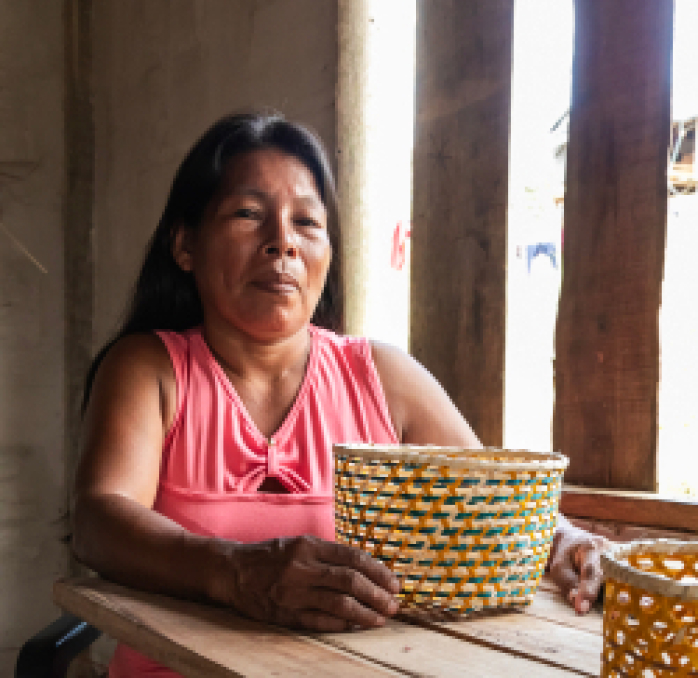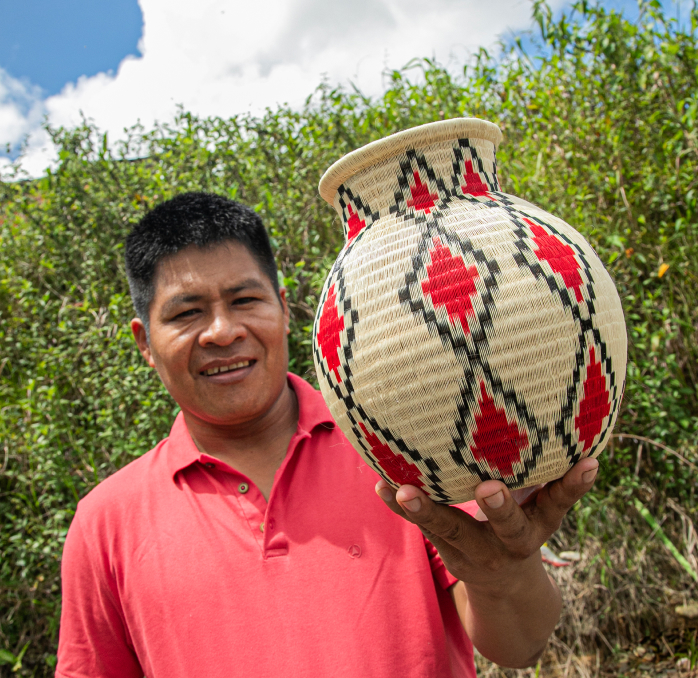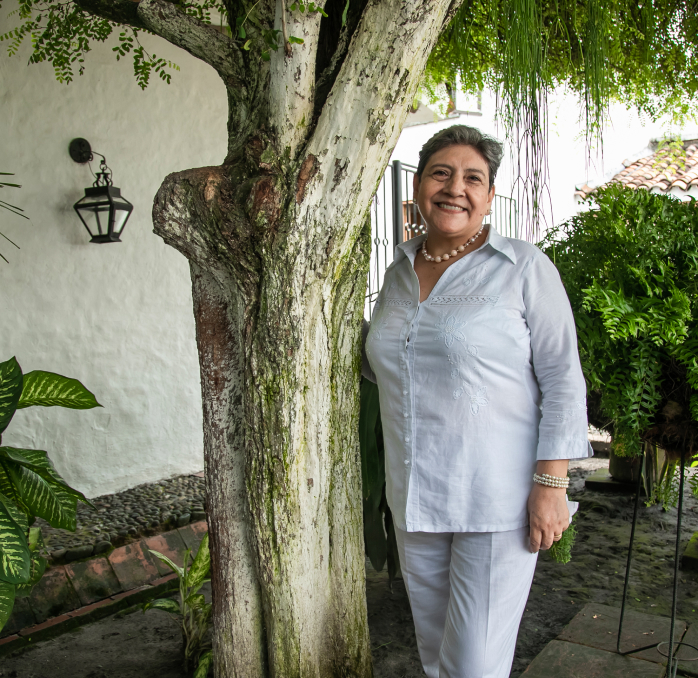Juliana Quiró
Workshop: Uikhimju (pensamiento de mujeres)
Craft: Cestería
Trail: Valle del Cauca route
Location: Buenaventura, Valle del Cauca
One day, a lady ventured into the scrubland and encountered a witch engaged in plucking tiny sticks from a plant. Intrigued, the lady inquired about the plant’s name, and the witch answered: “”For the indigenous people who speak the nonam tongue, it’s called nemkha, and for the Spanish-speaking population, it’s called chocolatillo.”” The witch, who had used its fibers for making a crib and putting her son to sleep, proceeded to teach the lady how to weave using the same technique for making today’s eye-like baskets. That’s why nowadays, when someone takes an eye-like basket to the scrubland, it gets lost—the witch is believed to claim it.
As Juliana’s soul woke up on the coast of the San Juan River in Chocó department, her wounaan family already made baskets for selling. Raised amidst tales of the eyed basket witch and observing her mother, Egidia Chocho, and grandmother, Vasilita Ismare, weaving baskets that had served their community for generations—storing clothing, kitchenware, food, and seeds—Juliana’s initiation into weaving occurred at the tender age of eight. Guided by her mother, she learned to weave the eye-like pattern. Progressively, she mastered crafting aguaneco baskets, terlenque baskets, and the most intricate of all—the petaca baskets. Proficiency in the latter is the equivalent to graduating as a weaver. These big baskets have lids and are adorned with diverse designs. They were traditionally used for storing blankets and new clothes, but this tradition has diminished as plastic wardrobes have become the prevailing choice.
Having resided in Buenaventura for a decade, Juliana now lives an hour uphill in the jurisdiction of Córdoba. Her family moved to Buenaventura in 2014, driven by the violence that afflicted San Juan. Throughout those ten years in Buenaventura, she ceased weaving altogether. However, relocating to the indigenous council and reclaiming her territory with her husband and four children revitalized her weaving practice. The chocolatillo, a leafy plant, is pivotal to her craft. Extracting thin sticks or straws from its stems, Juliana primarily acquires chocolatillo from the lowlands where her coastal relatives reside, as it doesn’t thrive in the mountainous terrain where she lives. She travels to the sea or to the afro indigenous communities, who sell it to her, and proceeds to devein and dye them. Achieving white strands necessitates scraping and boiling the fibers to eliminate the green hue. Conversely, to attain black fibers, she buries them in mud for five days, while red strands are achieved by cooking them with puschama leaves, followed by washing and sun-drying.
With the chocolatillo you can make firm baskets, though its firm fibers tend to break when bent. In contrast, the tetera palm is soft, pliable and bears handling—its ideal for transportation over long distances without risk of damage. Yet, locating tetera palm in the Valle del Cauca rainforests proves challenging. If chosen, cultivation is necessary as only one straw can be harvested from each bush due to varying fibrousness. This material requires a more intricate preparation involving multiple scrapings and washes. Consequently, chocolatillo remains the preferred choice. Juliana is part of the Uikhimju group, comprising seven women and four men. The name translates to “”women tought,”” and since 2015, the members have united to create beaded necklaces, wérregue, tetera palm, and chocolatillo baskets.
If Juliana is a weaver, it’s for the drawings. While she takes delight in crafting her own baskets, observing others’ creations and learning new designs are equally gratifying. Traditional patterns encompass butterflies, fishing hooks, monkeys, crosses, ladders, and native trees like yame—seeds of which are buried in mud. Her personal favorite is the shrimp’s eye, a motif composed of little dots. When woven in black and white, and admired in the darkness of the night, it evokes the luminance of fireflies that illuminate the calm mountains she now calls home—a place where she continues the legacy of crafts she learned in her youth.
Craft

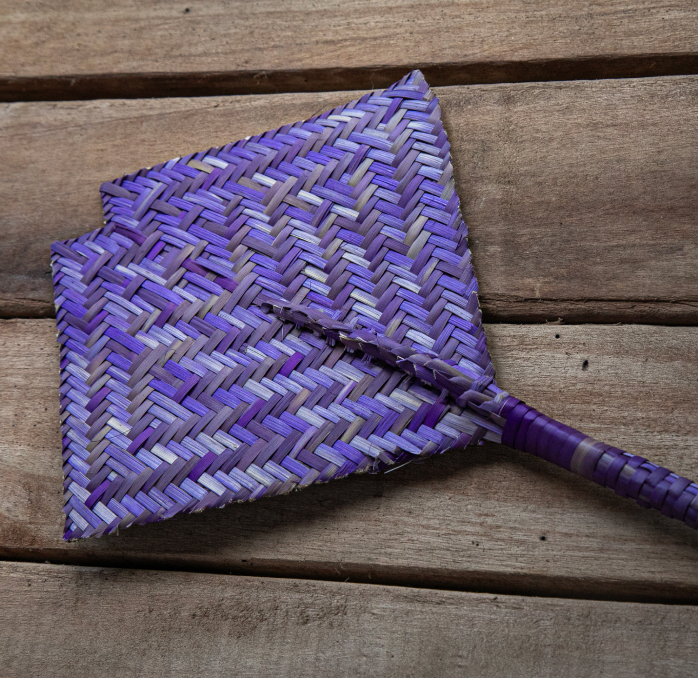
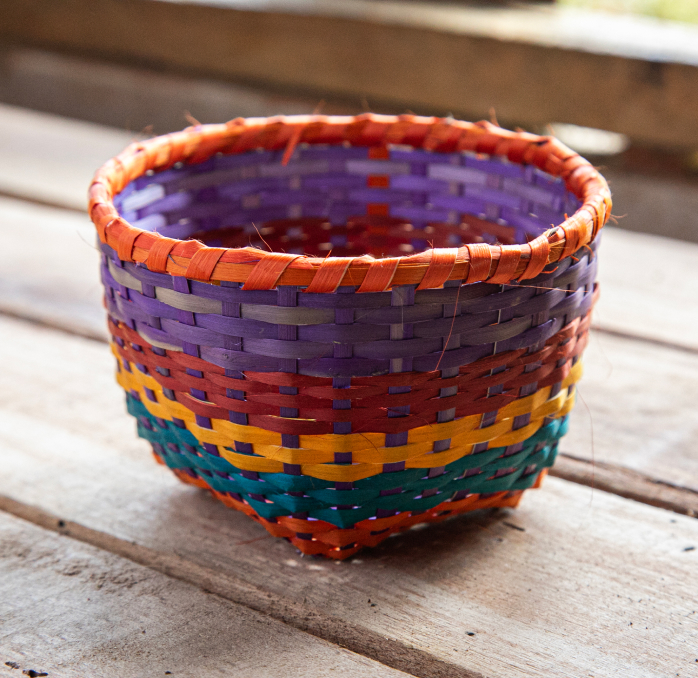







Artisans along the way
Artisans along the way
No puede copiar contenido de esta página

















































